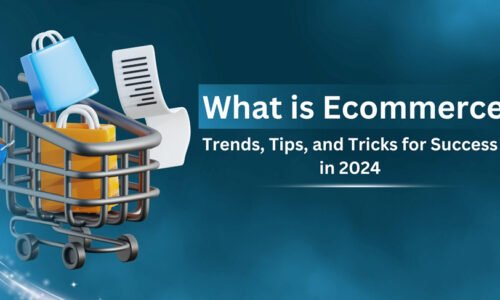In the ever-evolving landscape of retail, the lines between traditional brick-and-mortar stores and digital e-commerce platforms are increasingly blurring. This integration marks a pivotal shift in how businesses approach retailing in the modern age. Understanding this fusion is crucial for anyone navigating the retail sector, from small business owners to large corporations. This blog explores the synergistic relationship between e-commerce and traditional retail, shedding light on why this trend is not just beneficial but essential in today’s market.
The Evolution of Retail: From Brick-and-Mortar to Online Platforms
Retail has undergone a significant transformation over the decades. The traditional retail model, characterised by physical stores and direct customer interaction, dominated for centuries. The advent of the internet and e-commerce, however, revolutionised how people shop. E-commerce platforms offered unparalleled convenience, variety, and competitive pricing, challenging the traditional retail model. This shift wasn’t just a change in shopping methods; it represented a fundamental shift in consumer behaviour and expectations. Retailers were compelled to rethink their strategies, leading to an era where the distinction between offline and online shopping experiences began to blur.
Blending E-Commerce with Traditional Retail: The New Normal
The modern retail landscape is characterised by an omnichannel approach, where businesses integrate their online and offline channels to provide a seamless customer experience. This strategy allows customers to engage with a brand through multiple touchpoints – browsing online, trying out products in-store, or completing purchases via mobile apps. For instance, brands like Nordstrom and Target have successfully adopted this approach, offering services like online ordering with in-store pickup, virtual try-ons, and personalised online recommendations based on in-store purchases.
This blend offers customers the best of both worlds: the convenience and breadth of online shopping, coupled with the tangibility and immediacy of physical stores. For retailers, it opens up new avenues for customer engagement, data collection, and sales opportunities, transforming challenges into innovative customer service solutions.
Benefits of Integrating E-Commerce into Traditional Retail
The integration of e-commerce into traditional retail brings numerous benefits. Primarily, it expands the market reach of retailers, allowing them to cater to a wider audience beyond geographical limitations. Additionally, the wealth of data gathered from online interactions provides valuable insights into consumer preferences and behaviour, aiding in more targeted marketing and inventory management.
Perhaps the most significant advantage is the ability to offer a personalised shopping experience. By leveraging data from online activities, retailers can customise their in-store offerings, making each customer’s visit more relevant and engaging. This level of personalization increases customer satisfaction and loyalty, ultimately driving sales.
Challenges and Solutions
However, integrating e-commerce with traditional retail isn’t without challenges. Logistics, such as managing inventory across multiple channels and ensuring timely deliveries, can be complex. To address this, retailers are turning to advanced inventory management systems and robust supply chain solutions. Another challenge is maintaining brand consistency across different platforms. This requires a unified brand strategy and coherent communication across all channels, ensuring that customers receive a consistent brand experience whether they shop online or in-store.
Future Trends and Predictions
Looking ahead, emerging technologies like Artificial Intelligence (AI), Augmented Reality (AR), and Virtual Reality (VR) are set to further transform the retail experience. AI can personalise shopping experiences at an even more granular level, while AR and VR offer innovative ways for customers to interact with products. The future of retail will likely see even more immersive and technologically advanced integrations between e-commerce and traditional retail spaces.
Final Thoughts
The convergence of e-commerce and traditional retail is not just a trend but a new retail paradigm. As this integration deepens, businesses that adapt and innovate will thrive. The future of retail lies in creating seamless, personalised, and technology-driven experiences for consumers.
As we look towards this future, one question remains: how will retailers continue to innovate and elevate the shopping experience in this blended reality? The answer, undoubtedly, lies in the ongoing and dynamic interplay between e-commerce and traditional retail.

